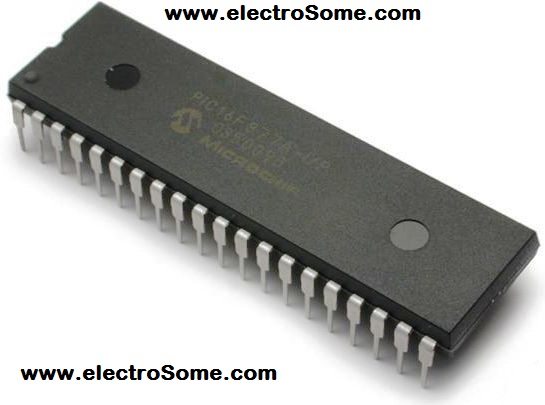Contents
Introduction
PIC to PIC communication will be needed in some embedded applications. We have two options to transmit data through transmission lines.
- Parallel Transmission
- Serial Transmission
Parallel Transmission
In parallel communication an entire byte of data is transmitted at a time. That is each bit has dedicated line. Thus for 8-bit data transfer we need 8 dedicated lines as shown above.
Serial Transmission
In Serial Transmission only one bit of a byte is transmitted at a time. There is only one communication line, thorough which bits are transmitted sequentially.
Data can be transmitted using Parallel or Serial techniques, as the pros and cons of two methods are equal and the selection depends on application. Parallel Transmission is very fast compared to serial transmission, as it transmits a byte at a time. Serial Transmission is cost effective as compared to Parallel Transmission as it requires only one line for transmission.
Transmission Systems are also classified into 2 on the basis of transmission synchronization.
- Synchronous Transmission
- Asynchronous Transmission
Need for Synchronization
When an electronic device transmits data to other there must be certain synchronization between them, ie the receiving device must have a way to know the beginning and end of each unit (byte) of data.
Synchronous Transmission
Synchronous Transmission are synchronised using a clock line, ie the communications are time synchronised. An external clock line is also used along with data line to synchronize transmission and reception ends.
Asynchronous Transmission
There is no separate clock line in this system. Transmitter and Receiver works on separate clocks. Start and Stop bits are also send along with data to identify start and end of a byte.
We can transmit data in three ways.
- Simplex
- Half Duplex
- Full Duplex
Simplex
In Simplex Transmission, data is transmitted only in one direction.
Half Duplex
In Half Duplex Transmission, data can be transmitted in both directions but to one side at a time.
Full Duplex
In Full Duplex Transmission data can be transmitted simultaneously in two directions.
USART – Universal Synchronous Asynchronous Receiver Transmitter
USART is the most commonly used serial I/O module. It is also known as Serial Communications Interface (SCI). USART can be easily configured as a full-duplex asynchronous communication system that can communicate with peripheral devices, such as personal computers and CRT terminals, or it can be configured as a half-duplex synchronous communication system that can communicate with peripheral devices, such as serial EEPROMs, A/D or D/A integrated circuits, etc. USART can be configured in the following modes.
- Synchronous Master – Half Duplex
- Synchronous Slave – Half Duplex
- Asynchronous – Full Duplex
We don’t want to bother about configuring USART registers as MikroC Pro for PIC Microcontrollers have built-in library function to handle asynchronous communication.
Circuit Diagram
The above circuit can demonstrate the PIC to PIC Communication using USART. Here we are using Asynchronous communication. The switch status read by the first PIC is transmitted to the second PIC and displayed using LED’s.
MikroC Code
Transmitter
void main()
{
TRISB = 0xFF;
PORTB = 0;
UART1_Init(9600); // Initialize UART module at 9600bps
Delay_ms(100); // Wait for UART module to stabilize
while (1)
{ // Endless loop
UART1_Write(PORTB); // and send data via UART
Delay_ms(500);
}
}
Receiver
void main()
{
TRISB = 0;
PORTB = 0;
UART1_Init(9600); // Initialize UART module at 9600bps
Delay_ms(100); // Wait for UART module to stabilize
while (1)
{ // Endless loop
if (UART1_Data_Ready())
{ // If data is received,
PORTB = UART1_Read(); // read the received data,
}
}
}
Download Here
You can download MikroC files and Proteus files here..
PIC to PIC Communication using UART
